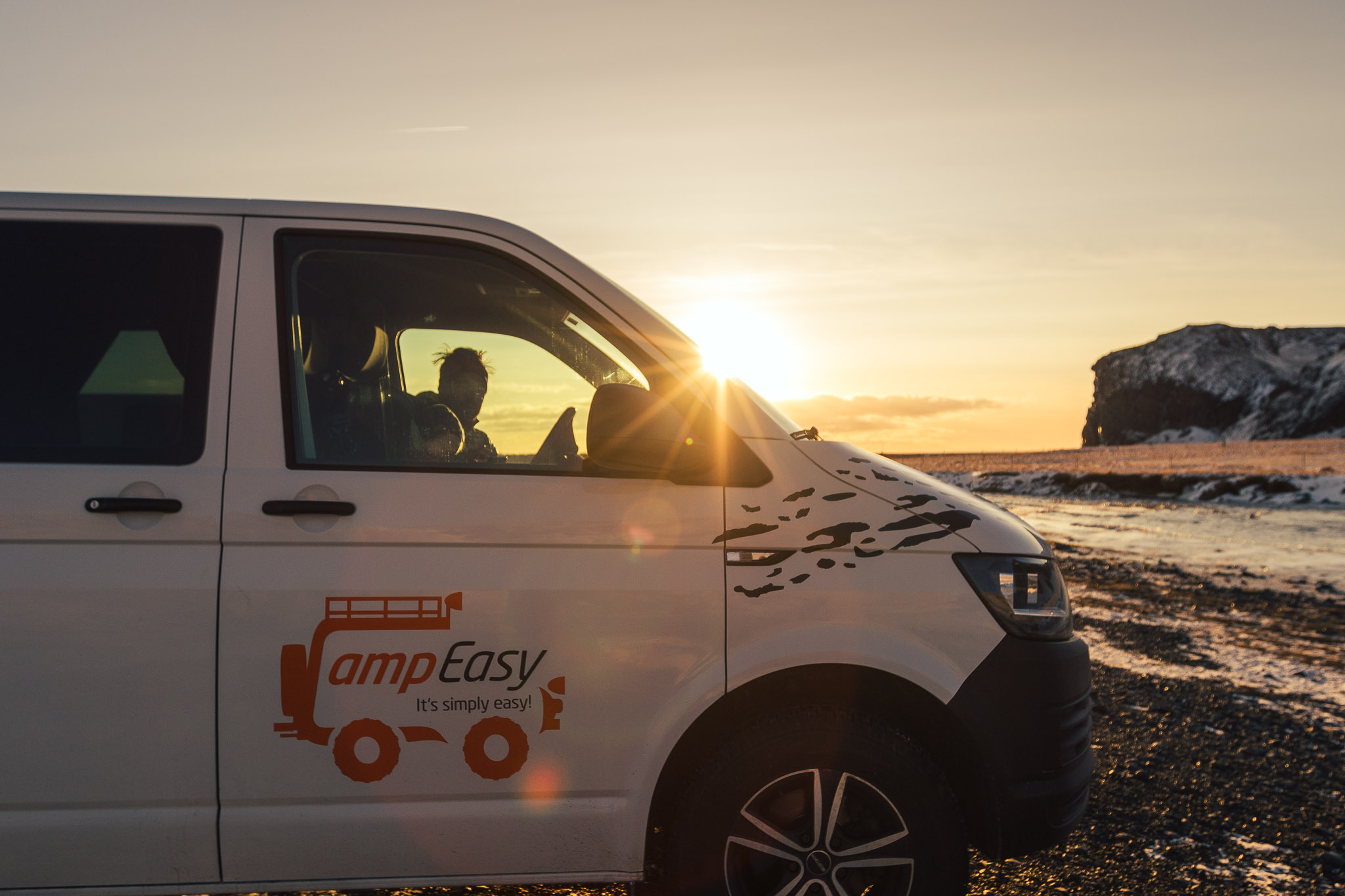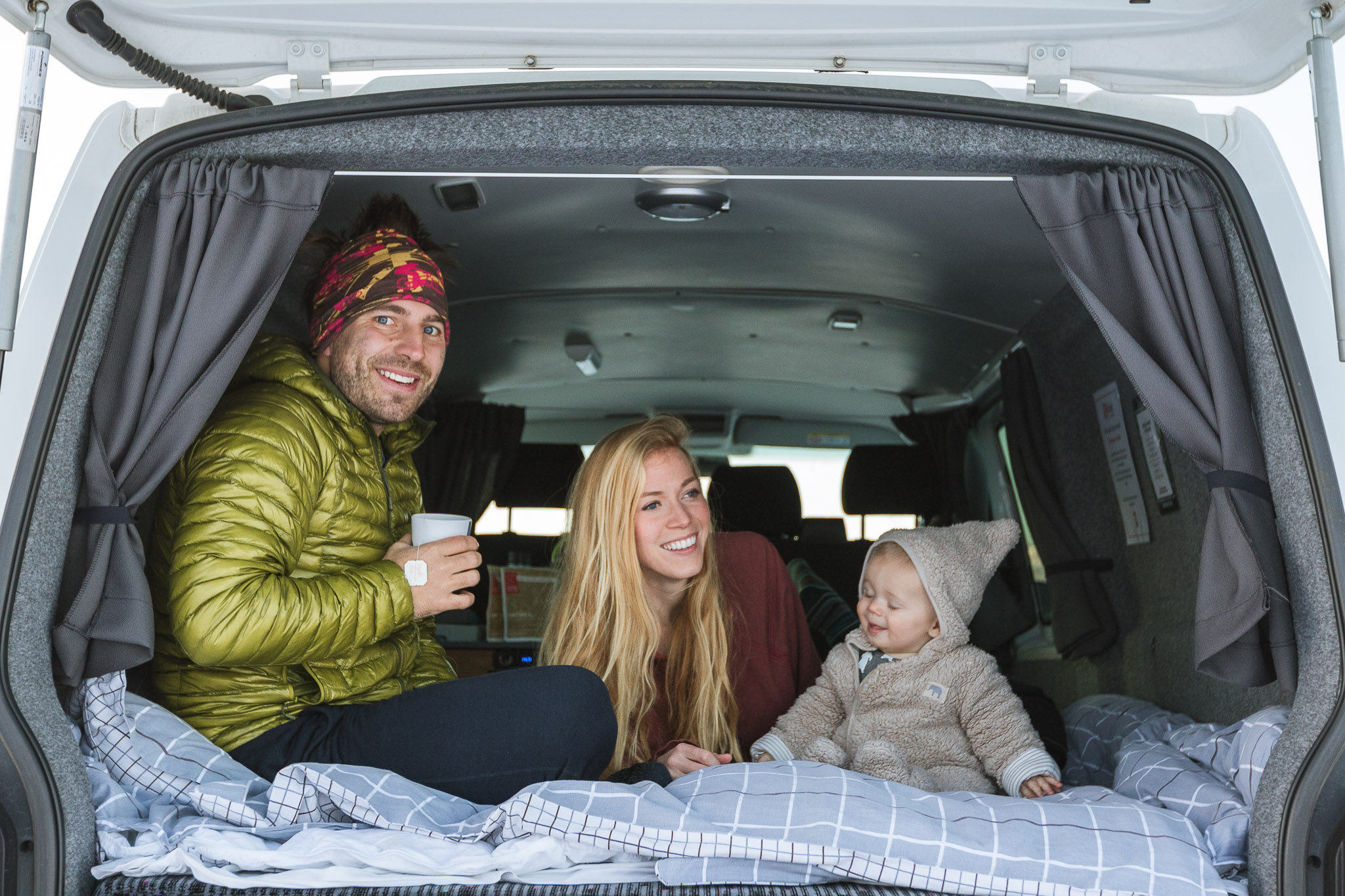
If there’s one thing we love around these parts, it’s people living the vanlife. Sometimes we call them vagabonds. Other times, they are the mad ones. But, above all, they are inspirations, because rather than indulging their wanderlust on occasion, they have built their whole lives around it. And, they have some seriously sweet rides. We haven’t met a single vanlifer whose rig didn’t make us want to hop on Craigslist and look for a large vehicle to convert into our own little home on wheels. But, if you aren’t quite ready to jump feet first into life on the road, you can dip a toe in the refreshing waters of the lifestyle when you travel.
We spoke with Cees Cornelis and Madison Elizabeth about the lessons they learned traveling abroad in a van, and they gave us a number of pro-tips that will help you make the most of living in a van while you explore a foreign locale.
First a little background, Cees and Madison starte their van life adventure in 2016, two years after Cees proposed to Madison in Yosemite National Park. The pair were committed adventurers from the jump and nothing felt more natural than exploring the world with each other. In 2016, the 100 year anniversary of our country’s National Parks, the pair hit the road in a renovated 1989 Mini Toyota Motorhome with the aim of hitting every national park in the country. Not only did they do it, Madison was pregnant with their son Theo for 40 of the park stops.
After reaching their goal, the soon-to-be-trio was supposed to return to the normie daily grind, but the draw of van (or motorhome) living was too great, and they just kept living on the road.
Recently, the family traveled to Iceland, where they continued that badass vanlife while exploring the country. When we discovered this, we knew we had to get their insight on adventuring abroad in a van. The couple were kind enough to speak with us and offer up warnings and suggestions that will help anyone thinking about forgoing a hotel or Airbnb for a mobile home base.
Read on, and consider it for your next adventure.
RULE 1: Pack Light
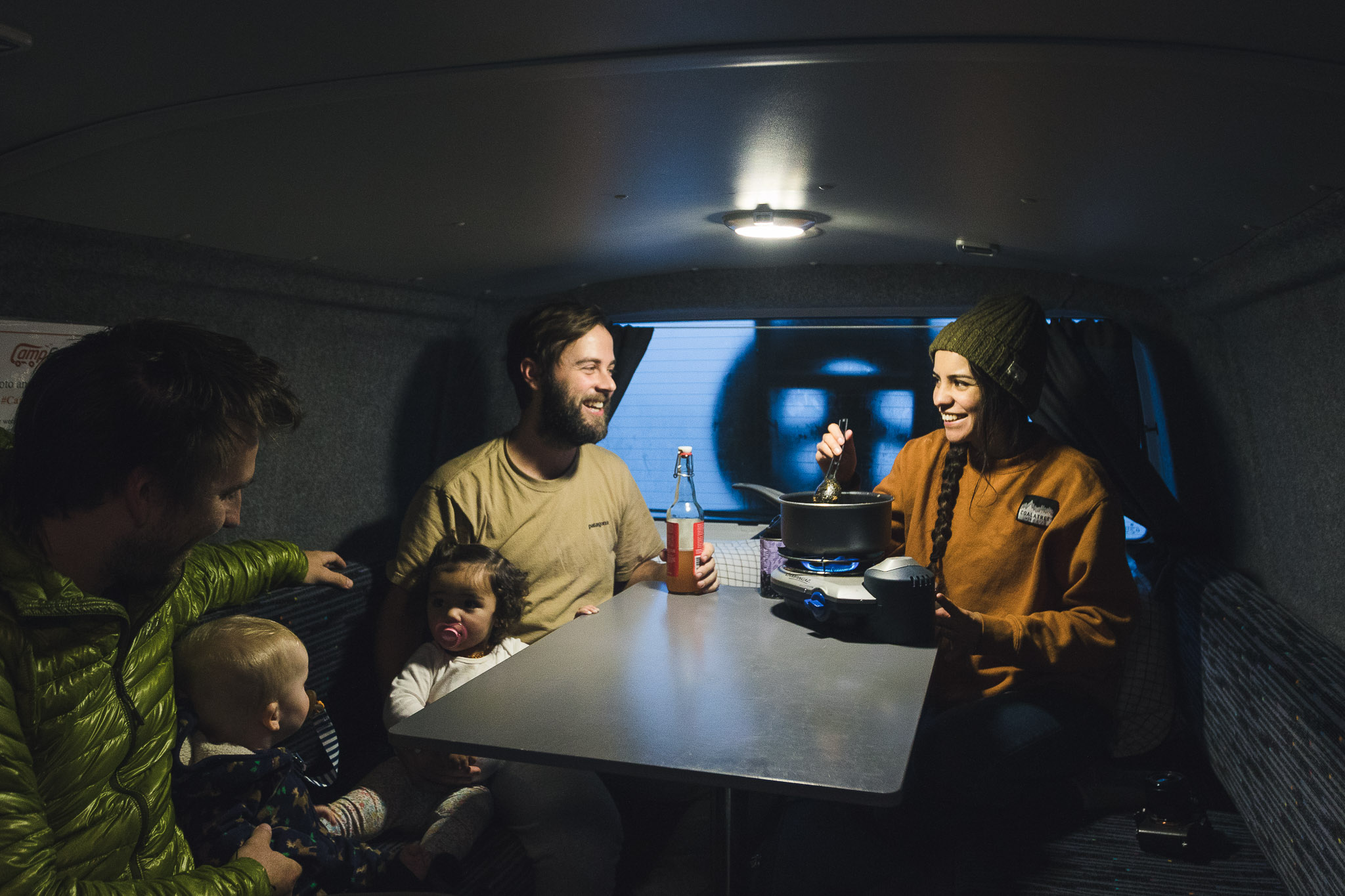
Cees: One of the main things we were thinking of as we’re heading to Iceland was the fact that we were going to be in a van in the cold, so we didn’t have room for a ten-piece luggage set full of warm gear. We really had to focus on our layers, what was going to keep us warm and let us adventure and live halfway outside this van and in these wild places. ‘
Madison: We focused on making sure we packed very minimally and packed the best gear. And making sure that Theo was going to be warm enough. That was definitely part of my main concern, making sure we were all warm enough. All the baby gear and taking a lot of stuff over there wasn’t really a huge deal because we were able to keep it really minimal and it made living in a van super easy and —
Cees: And we’re used to that. We’re used to living on the road, packing small.
Madison: I think anyone can do it, as long as they’re willing to try a more minimal lifestyle and go for it. It really wasn’t a big deal.
Cees: Yeah, I actually put together a little blog post on our blog about how to pack minimal for winter in Iceland, and I just really focused on layers. So, I had one set of every individual layer. I had my face layer, an insulating layer, and then a waterproof, windproof layer, and that’s pretty much it.
RULE 2: Do Some Research
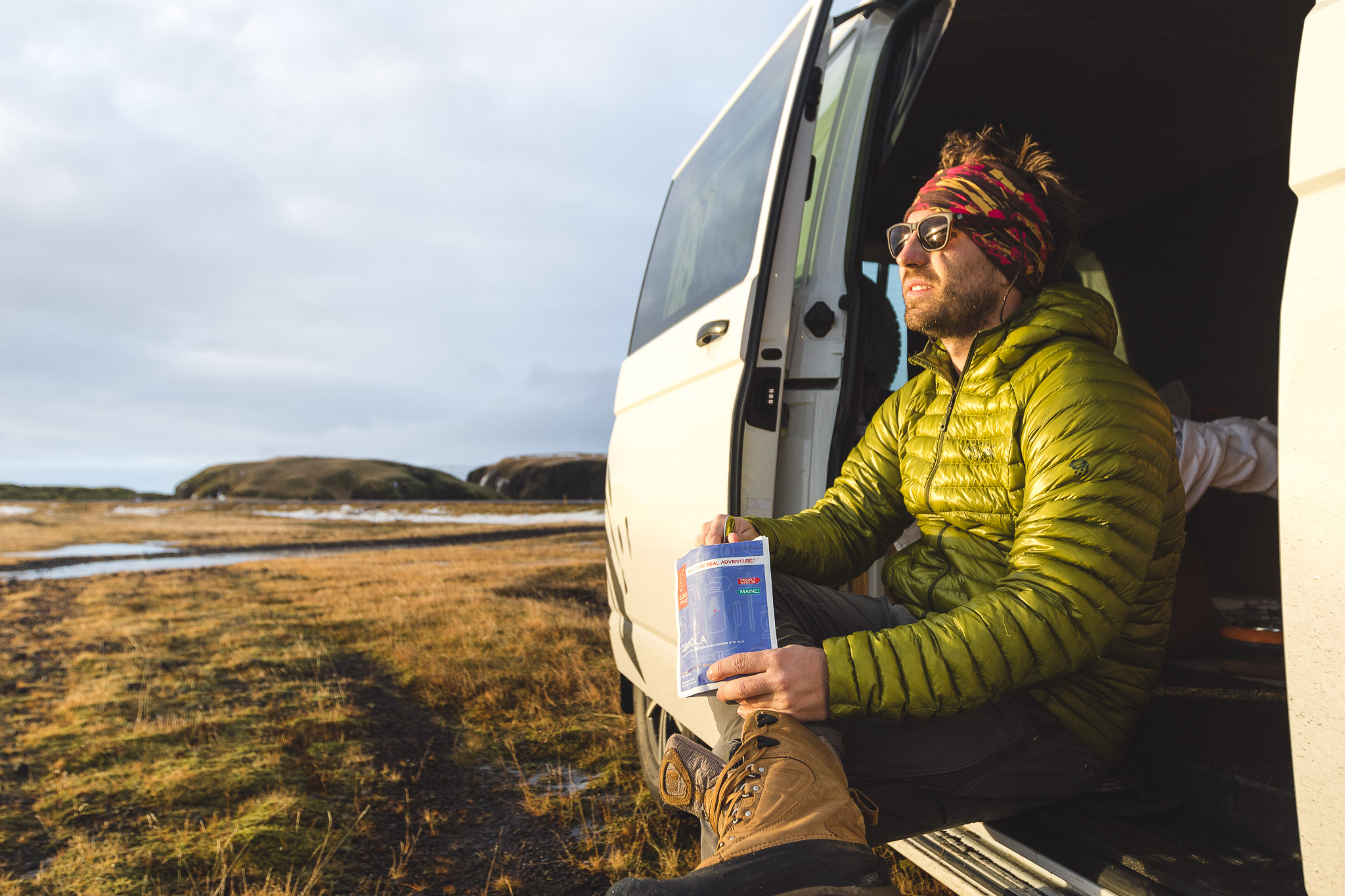
Madison: So, we did a lot of research looking at other people’s blogs, travel guides for Iceland online, you know, whatever we could find. And generally, people just said the best thing to pack is waterproof because being wet and cold is the worst situation you can get into. It was still pretty wintry, but it wasn’t as cold as you would imagine. We were colder in Chicago than we were in Iceland by about 30 degrees. Iceland in the winter was more moderate than I expected.
We didn’t necessarily have to have the kind of gear that you would imagine going to Antarctica or something. All we needed was whatever down jacket or puffy coat that we would normally wear skiing, or snowshoeing, or even just hiking out and about. We did what we normally would, plus waterproof to make sure because if one of the days is rain and snow, you don’t want be stuck with wet smelly stuff. But I think that was the main thing. We used what we had already, and we made sure we had waterproof stuff.
Cees: One of the things that I think that our research did pay off was we found some pretty awesome hot springs that we wanted to hit while we were there, and so a swimsuit was definitely necessary. They were pretty next level hot springs, and I guess it didn’t hurt that we were hanging out in the hot springs while the Northern Lights were going off over above us.
Madison: That’s what some of the other travel blogs and guides were recommending; the three best things you can bring to Iceland are good boots, a good jacket, and a swimsuit. So those are the three things that we made sure we had.
Cees: Also, we’re always documenting. Everybody these days is documenting everything, right? So. we had our tripod and our DSLR camera that we were using to capture the Northern Lights and whatnot. We had the essentials.
RULE 3: Bring Headlamps
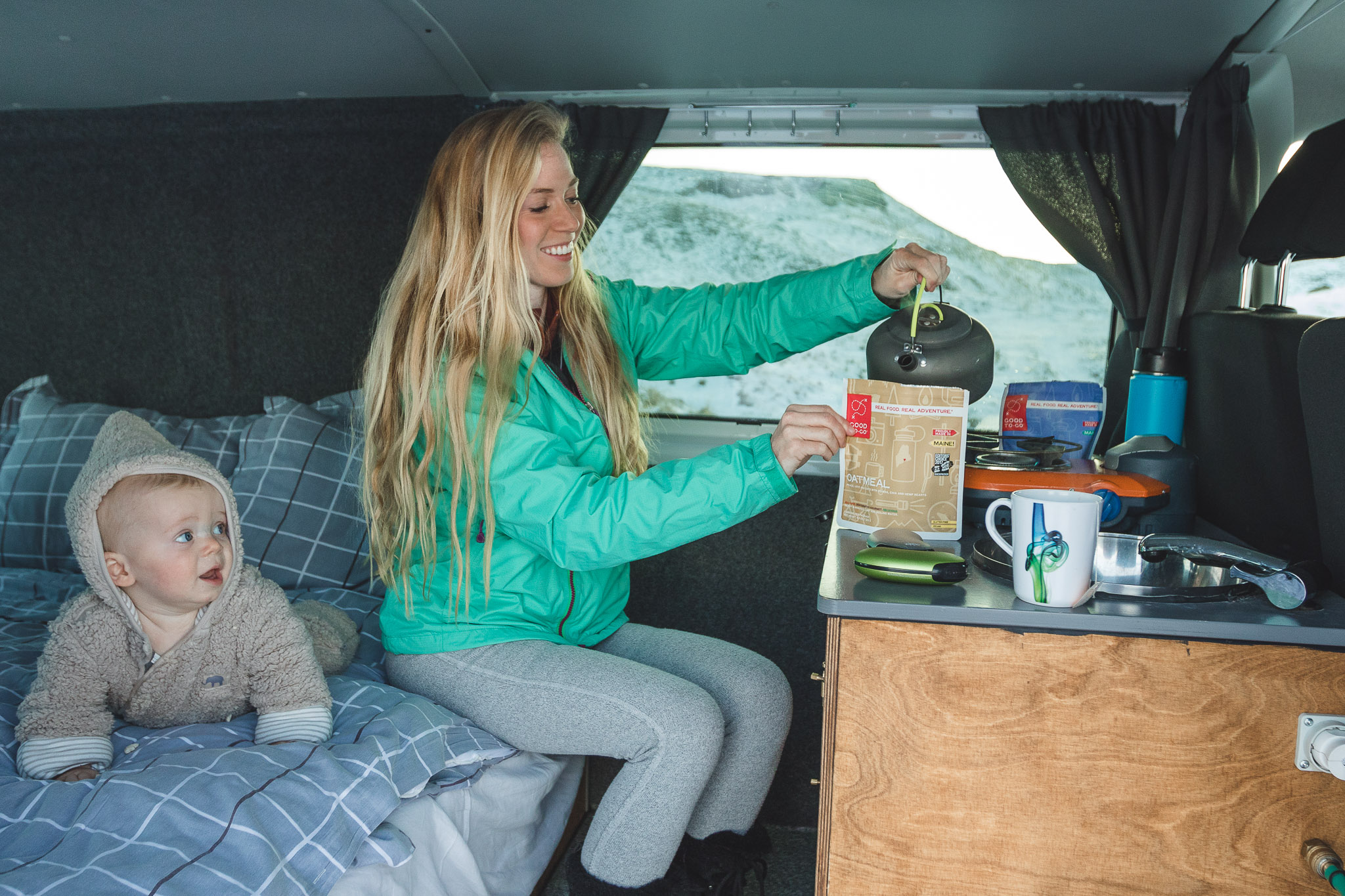
Cees: And then, there are things that you wouldn’t think of if you’re staying in a hotel or an Airbnb or something that. A head lamp. That was a necessity just because you’re spending a lot of time in the dark outside as you’re in and out of the van once the sun sets. And, so definitely bring a flashlight or a headlamp.
Madison: The van came equipped with a camping stove and propane and utensils and plates and cups and all the things you would normally pack when you go camping. And they even included towels for us and stuff to wash dishes. We didn’t have to worry about any of that. In fact, it was mostly just bringing food, clothes, stuff to document. A headlamp, like he said.
RULE 4: Research Van Companies
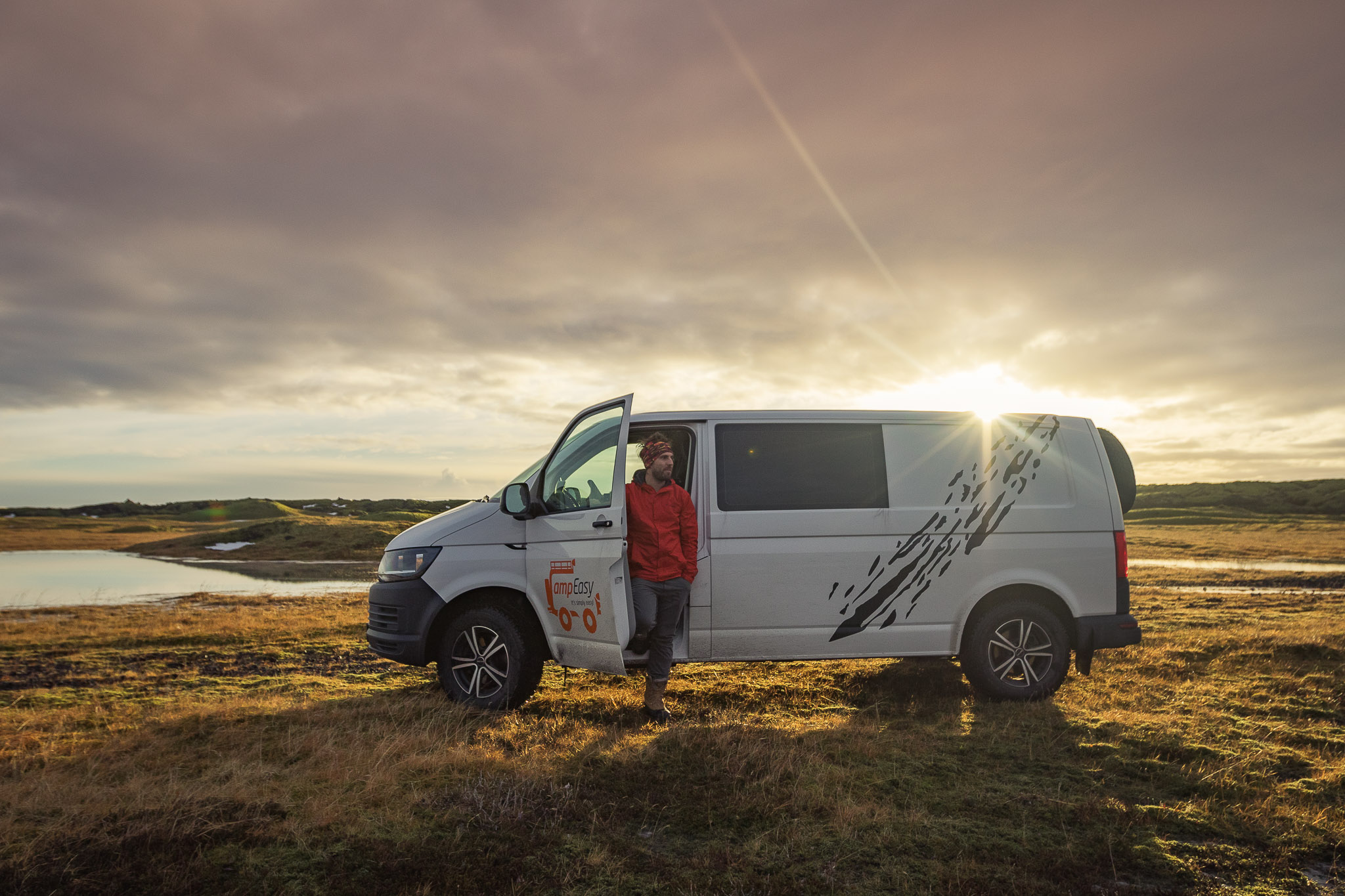
Cees: There’s a few out there but, Camp Easy Iceland are the guys that we went with. We met the whole crew when we were there getting set up in the van. The guys are hilarious, and they were super good to us with getting things set up. They really thought everything through. It’s pretty plug-and-play. You show up, they train you on how to use the van, how to use their stove and how to use the heater so you don’t freeze.
Madison: I think traveling in a different country in a van is an ideal way of traveling if you want to be able to see the most amount of the country.
Cees: If you’re hungry, you just pull over and make a sandwich. You don’t have to go back somewhere.
Madison: Right. And if you’re tired, great you don’t have to go all the way back to the hotel and regroup. And everything that we would ever need is already in the van, so we don’t have to worry about packing backpacks through the day and then running around with stuff in a rental car. Like, it was already there.
Cees: Or even like worrying about check out times or check-in times with all of your luggage. You were already organized and set. We drove like, 800 to 1000 miles around the island. We didn’t have to ever check in or check out.
RULE 5: Downsize
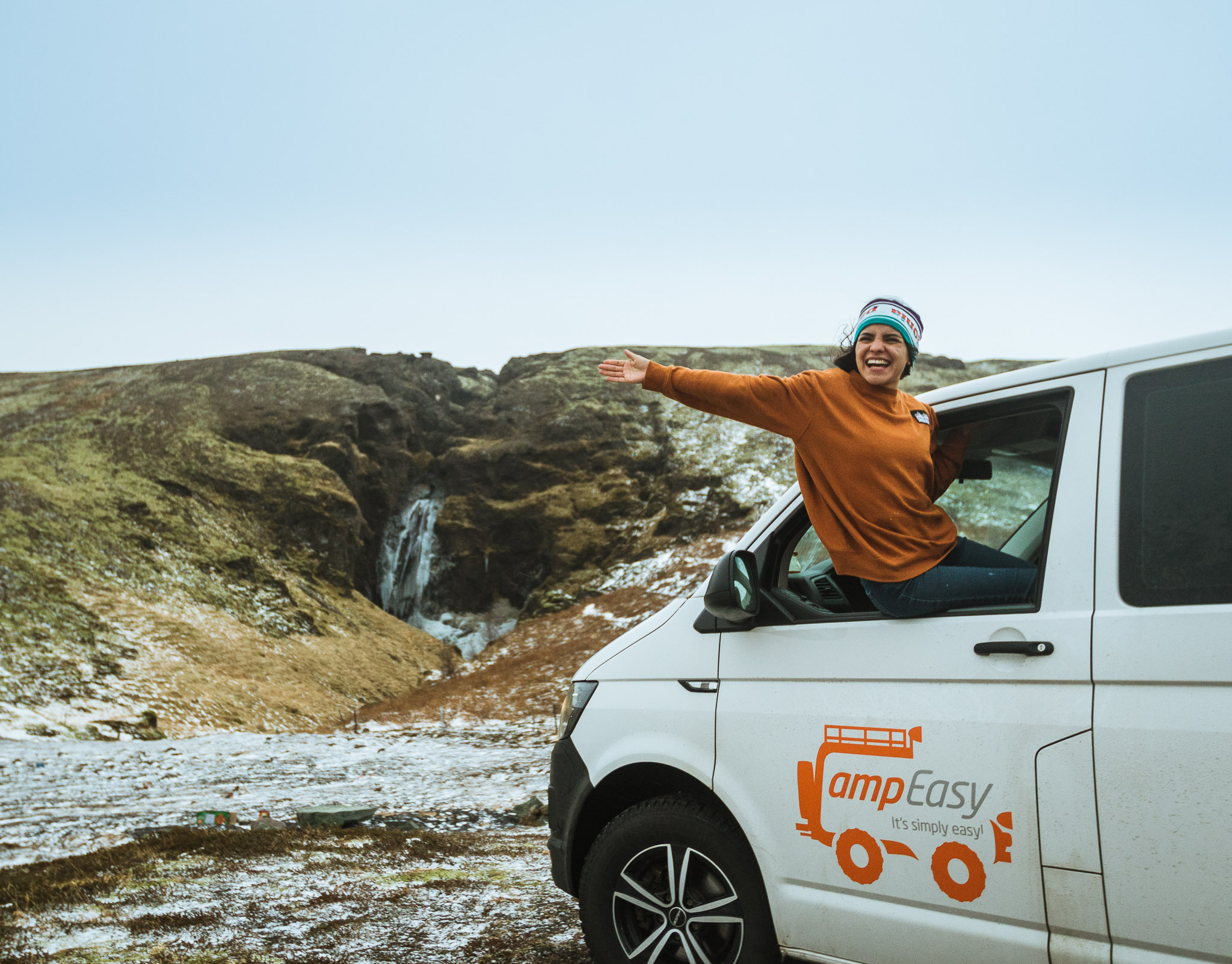
Madison: Compared to our rig at home, our van in Iceland was a lot smaller.
Cees: A lot smaller much more simple. We live kind of a hybrid life on the road. We have an old RV that we’ve kind of converted.
Madison: And it’s a mini RV.
Cees: A mini RV so, it’s not like a huge bus or anything but, it still has a toilet and a shower, which the van definitely did not have. There was a bed, a tiny little sink and little stove and that was about it.
Madison: It’s like comfortable camping.
Cees: Yeah, comfortable camping. Good way to put it.
RULE 6: When It Comes To Camera Equipment, Stick To The Basics
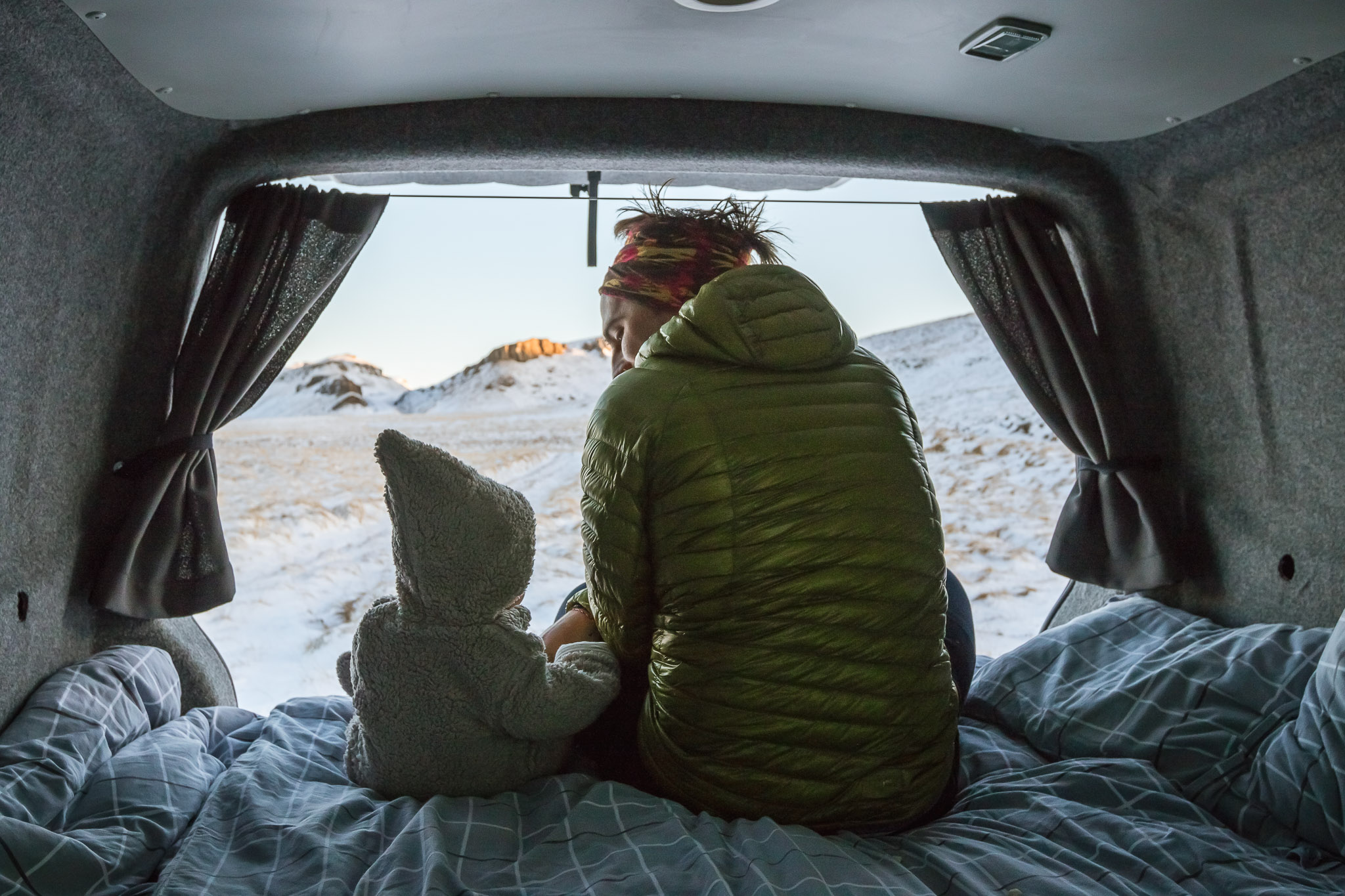
Cees: We brought a wide angle lens. That was really it, actually.
Madison: I guess we did just bring the essentials like our favorite lens. The tripod. And the necessary hard drive for our computer.
Cees: And the tripod is definitely essential if you are planning on any low light shots or Northern Light shots.
RULE 7: Be Aware Of Gas Prices

Cees: I would make sure you look at gas prices. That was a bit of a shocker. We knew Iceland’s gas was gonna be more expensive than here. But, we sure weren’t expecting how much. When we converted it, the price was 8 or 9 bucks a gallon. It was super expensive compared to what we were used to.
When we were budgeting, we didn’t really take that into account as much as we should have because it was a bit of a shocker the first time we had filled up half a tank and it was over $100 bucks. Definitely, if you’re going to be living in your transportation as well there is probably going to be more driving than you would normally have on the trip. So, just factor in gas prices.
Madison: I mean, you are saving by bundling a rental car and potential Airbnb’s and hotels whichever way is conventional. By doing it unconventionally in a van, you’re kind of bundling those normal costs.
RULE 8: Be Flexible With Parking
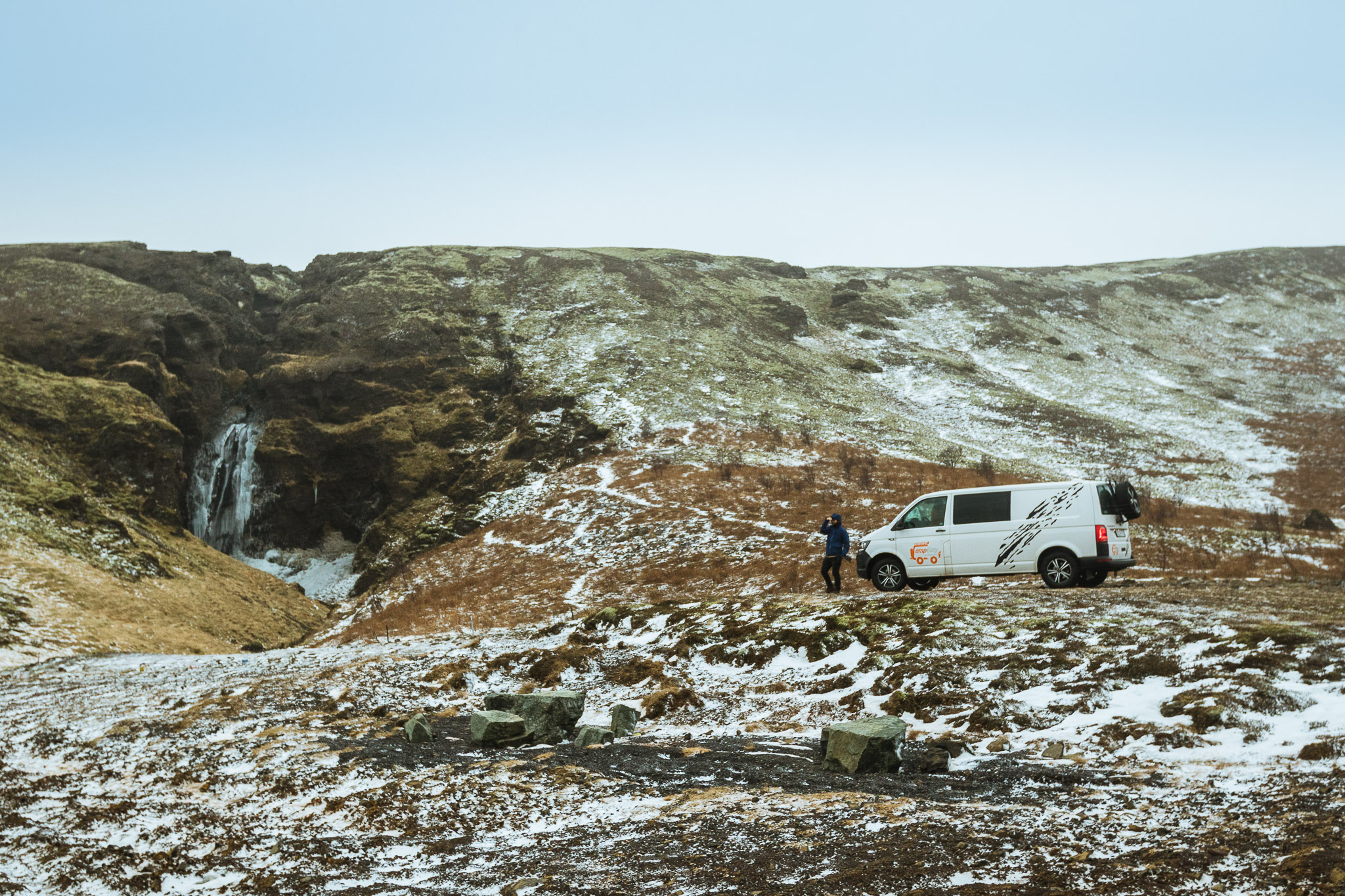
Cees: We tried to spend our time in campsites and actually one day it was super bad weather. One day out of ten, it was so windy and blizzardy; we didn’t feel like we could go to where we had planned to drive. And we just parked in the visitor’s center parking lot and went into the town where we were, and that’s where we slept. There is some flexibility there to where you can try to find a nice public land or whatever to park. But, if worse comes to worse you can improvise. You don’t have to fit that itinerary and find the place where you’re planning originally to park. Just park in a hotel parking lot if you have to, you know?
Cees: But make sure you pay attention to local laws. Some places are a lot stricter on where you can and can’t camp. Stay off of private land, obviously and respect the rules there.
